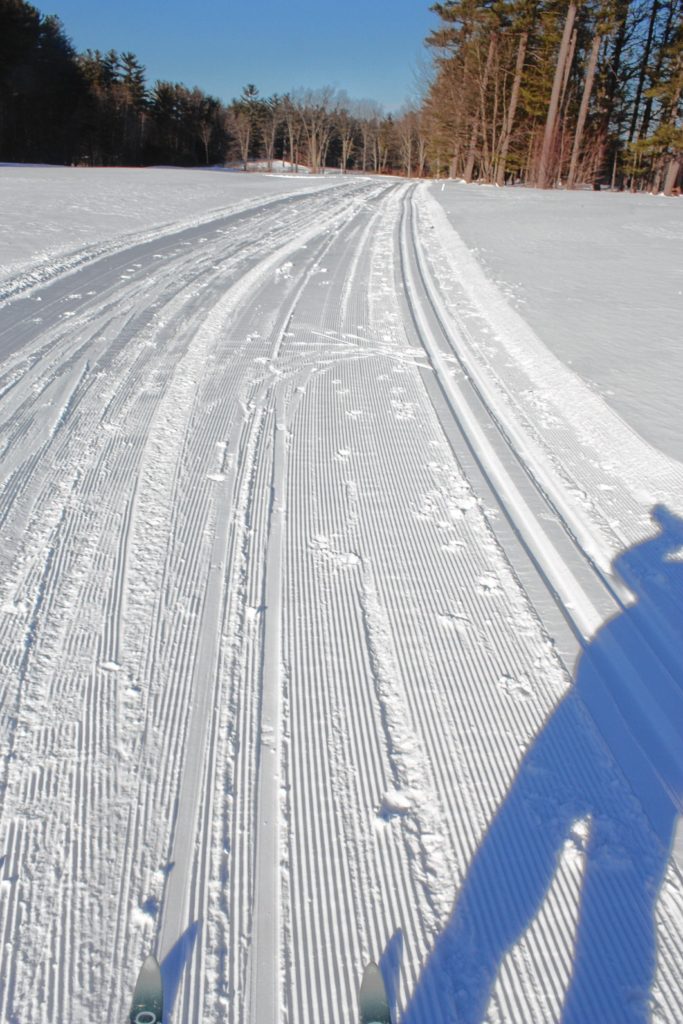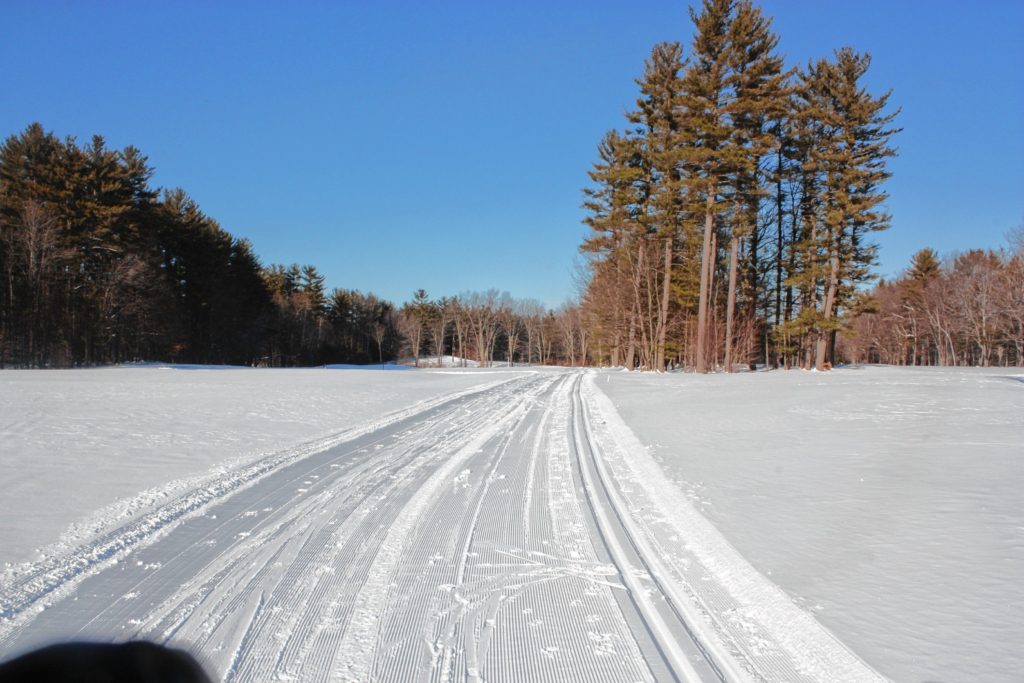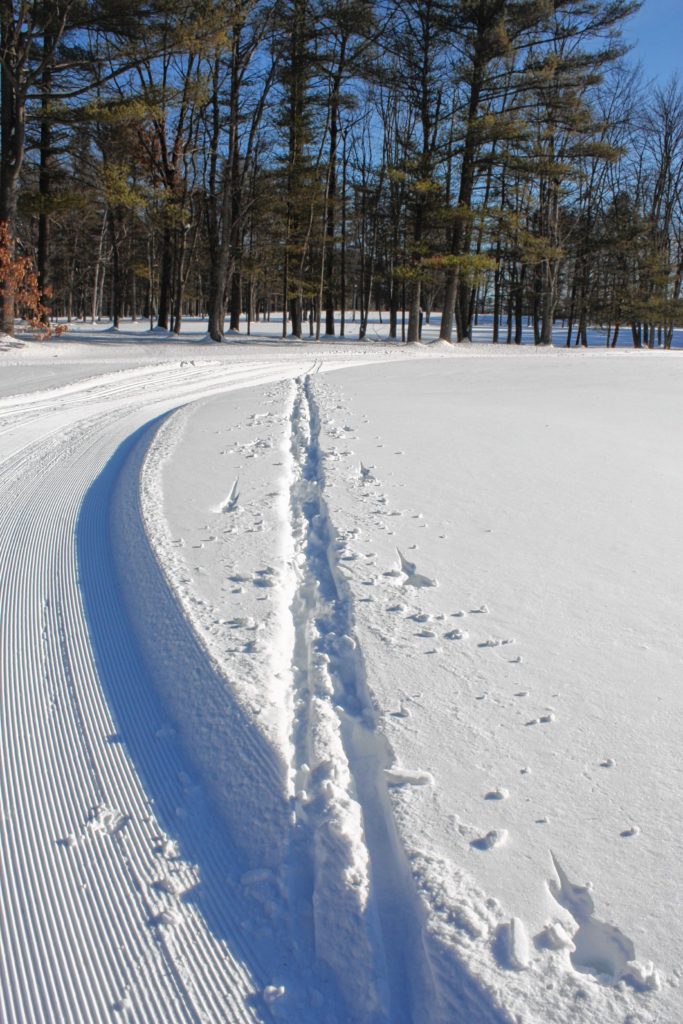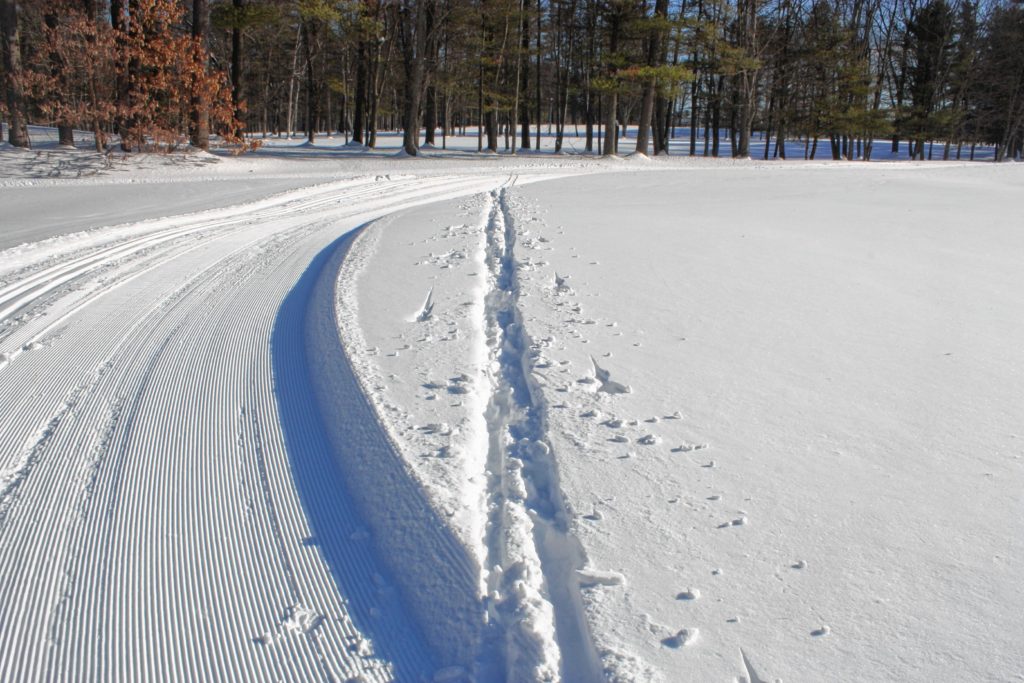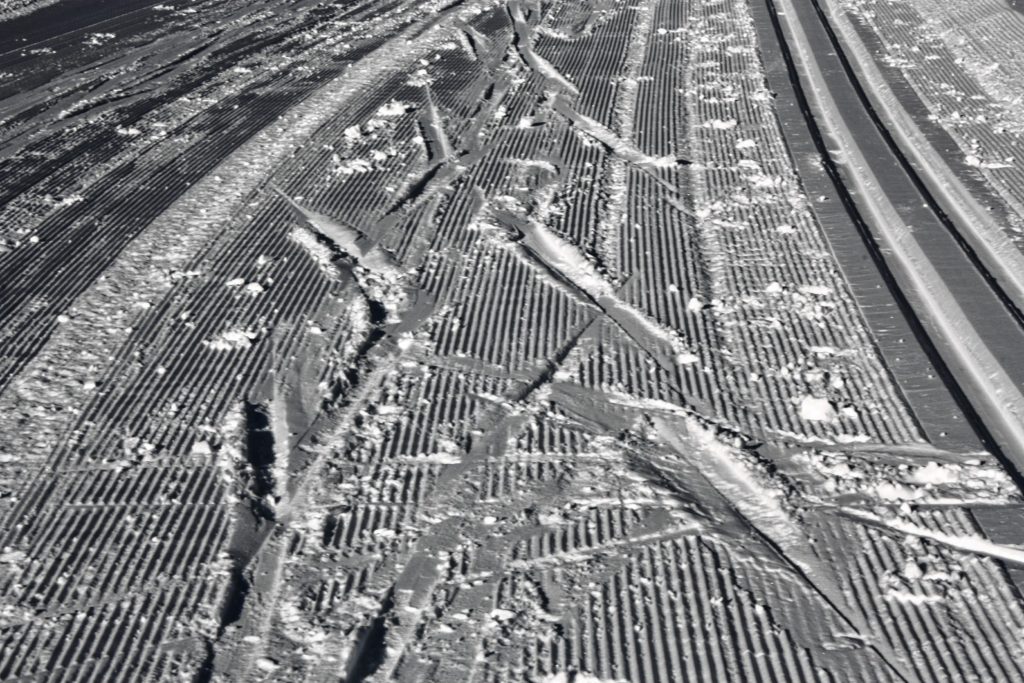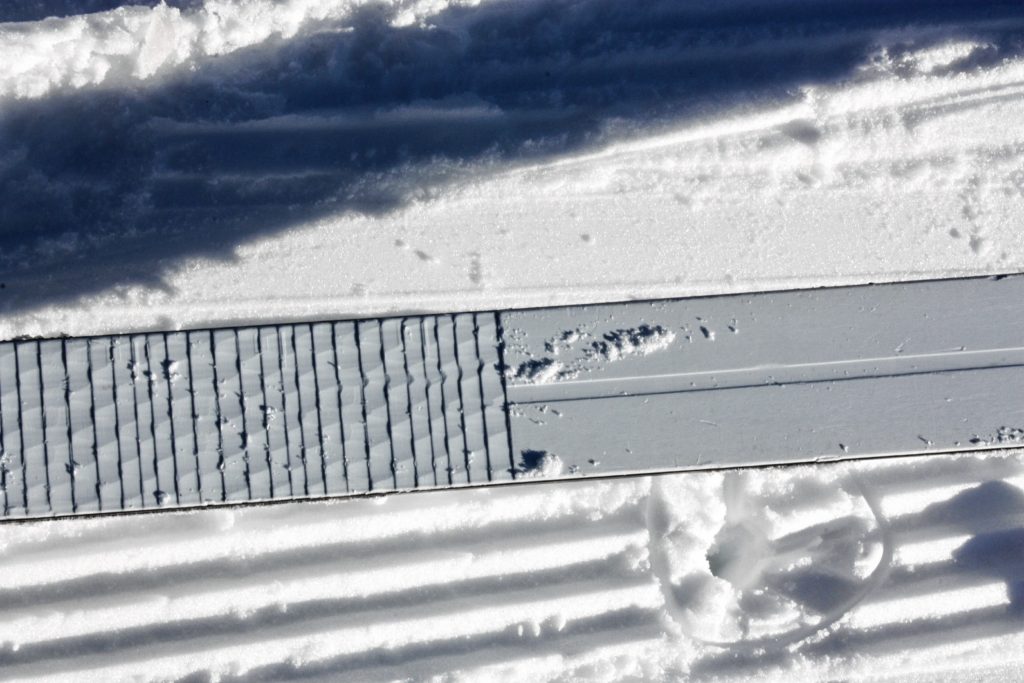Since I basically mastered snowbiking on my first-ever attempt for last week’s issue, I figured I should keep up the snow-sport conquering with a little foray into the world of cross-country skiing.
This was yet another snow sport I had never tried, and since it’s so easy to do in Concord, I figured I should give it a shot.
My first stop was Carter Hill Orchard. You probably know this place for its apples, pumpkins and famous cider doughnuts, but it’s also a cross-country skiing hub. Inside the farmstand, there are dozens of skis, boots and poles available for rent, and it all works by the honor system – nobody checks the gear out, you just leave money in a locked box by the front door.
Although this is a very cool format, for me it was a little intimidating since I had no idea what I was doing. I didn’t know what size skis – or boots, for that matter – I should be looking for, or whether there was any functional difference between all the skis and poles. All of the equipment was obviously similar but still quite different from downhill skiing, the only type I’d ever tried before.
Using my best judgment, I picked out a pair of skis that seemed like they were the right size for me. Then I walked over to the back wall, where pairs upon pairs of cross-country ski boots sat atop cardboard drip-catchers. They all had bizarre, high sizes (like in the 40s), with no traditional U.S. shoe size conversion on the tag or anything, so I eyeballed a pair that looked like they’d fit. As luck would have it, they fit perfectly, first try.
The first thing I noticed was that these boots were way more comfortable and flexible than downhill ski boots, and in fact were even more comfortable than the Timberland work boots I wore into the place.
I put them on, tied them up and left my work boots on the floor, confident that they’d still be there when I returned since there were about 50 other pairs of shoes and boots also sitting around.
Right near all the gear – which is provided by the Capital Ski and Outing Club and is available at Carter Hill seven days a week from December through March – is a sign outlining the pricing. A half-day rental of skis, boots and poles is $5, and that’s the option I went with. You can also rent for a full day, and any of the items can be rented individually as well.
As I was heading out the door with my gear, I asked somebody stocking the woodstove where the trail started, but he told me that there was actually no public skiing at Carter Hill that day due to a big high school race.
I was, however, allowed to take the equipment to either of Concord’s other two cross-country ski areas: White Farm and Beaver Meadow Golf Course.
Since I was only planning to go for a short trip – my first ever on a pair of cross-country skis – I decided to head over to Beaver Meadow, a venue I was already pretty familiar with. I drove with the ski boots on, since they were actually much better driving shoes than my own boots.
Unlike my first snowbiking experience, I was completely on my own for this one, which means I ran into trouble right away.
I parked my car and carried my skis and poles over to the snow, and I immediately realized I had no idea how to put the skis on. The bindings were very bare-bones, compared to those of downhill skis. There was no back part of the binding, just a toe part, and the boots only had one point of contact, a thin metal rod running horizontally across the toe.
I tried just kind of stepping into the binding, the way you would with a downhill ski and boot, but nothing was catching. I noticed the boot had a rectangular groove running down the middle, matching up with the sort of rail that ran down the center of the ski binding, so I tried starting at the far back end of the binding and sliding my foot forward.
That didn’t work.
At the toe part of the binding was a rubber wedge which I could lift up with my fingers, so I tried pulling the rubber up, slipping the toe rod of the boot under and letting go, but it wouldn’t catch.
Just as I was about to pathetically give up and Youtube it on my phone, I realized that beyond the rubber toe part of the binding was a plastic part similar to what’s at the toe of a downhill ski binding. The word “automatic” was printed on it. If it’s anything like a downhill binding, I thought, I should try pushing down on this part and see if that does anything.
Bingo! After only about 10 minutes of clumsily fussing around, I was finally able to click my left foot into the ski. The right one was a little harder, since my left leg was now slipping around on the snow, but I eventually worked it out.
Once I was locked in and upright, poles strapped to my gloved wrists, I began to push off in the way that I assumed was correct.
It was a beautiful winter day – sunny, no breeze, warm, cloudless – and I quickly started wishing I’d gone on a much colder one. After about six or seven strides, I was officially sweating all down my back. In hindsight, a long-sleeve thermal shirt with a down-filled jacket and a thick winter hat was probably a little overkill for the day anyway, let alone going cross-country skiing in that.
Stride seven complete, I ditched the jacket and left it in the snow off to the side of the trail – I wouldn’t be going too far, so I didn’t mind leaving it for dead.
Every stride I made was different, with differing results. I didn’t know the proper form or technique, and wasn’t even sure how I was supposed to use the poles,
At first, I found it easiest to rely on my arms. I dug both poles in a foot or two ahead of me and pulled myself forward, trying to skate my legs as I did. It only took a few reps of this to realize it wasn’t going to work without losing all feeling in my arms in a matter of minutes.
Next I tried sort of a skating technique, angling one ski out to the side and using it to push off, then alternating. The problem with this method was I couldn’t get into a rhythm with my poles while doing this skating motion.
Soon I hit a very gradual downhill slope, which afforded me the chance to try some other tactics, letting gravity and momentum do the bulk of the work.
Way ahead of me, a single skier was effortlessly making her way across the trail. I tried to observe her technique, but it was too far away to notice any detail that could be of use.
Once I reached the bottom of the “hill,” the trail looped around and went back up to where I came from, only about 50 feet across from the shaded and pleasant downhill trail. The uphill trail, of course, was completely in the sun.
As I prepared to huff it up the hill, face-first into the blinding sun (thankfully my sunglasses kept me from losing all sight), I sort of accidentally developed a new stride, one that was working. It was still mostly arms, but I developed a little shuffle step that was pretty efficient and less tiresome than anything I’d tried yet.
All that said, this was still a tremendous workout – the most exercise I’ve had this winter for sure (make of that what you will). By the time I made it back to my jacket near the parking lot, I was ready for a nap and a new shirt, but sadly I had to continue on with my regular work day.
Getting out of the skis proved to be infinitely easier than getting into them – I poked that toe clip on the ski binding with my ski pole and they immediately released.
I stuffed the skis and poles back into my car and took the ski-booted ride back to Carter Hill, where my clunky work boots were waiting patiently for me.
I put the skis back on the same rack I got them, deposited the poles (which I realized at this point were not a matched set) into a trash barrel full of them and exchanged boots before heading out the door.
Once outside, I had to stop for a second and marvel at the high-schoolers out there showing off their blazing speed and precision. After having just about given it my all just to make a simple horseshoe-shaped run, I gained a new respect for this peaceful yet vigorous winter sport.

